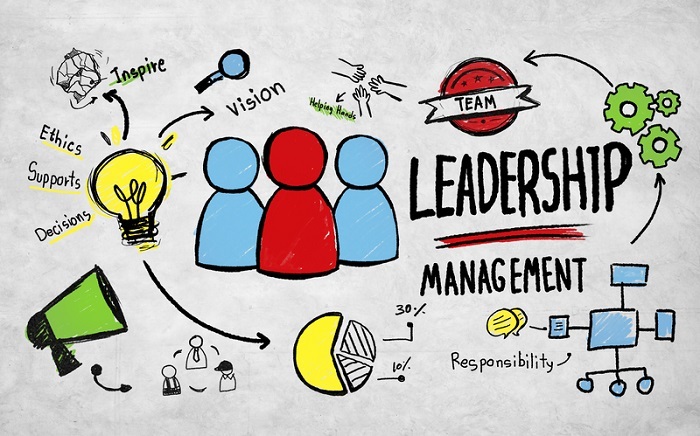
 Data Structure
Data Structure Networking
Networking RDBMS
RDBMS Operating System
Operating System Java
Java MS Excel
MS Excel iOS
iOS HTML
HTML CSS
CSS Android
Android Python
Python C Programming
C Programming C++
C++ C#
C# MongoDB
MongoDB MySQL
MySQL Javascript
Javascript PHP
PHP
- Selected Reading
- UPSC IAS Exams Notes
- Developer's Best Practices
- Questions and Answers
- Effective Resume Writing
- HR Interview Questions
- Computer Glossary
- Who is Who
What Are Some of the Techniques of Modern Management?
Businesses no longer think of their employees as just lazy and nonchalant wage earners. For them, employees have now turned into family. They have now understood that, though the primary need of every employee is to earn money, they have other needs as well that are equally pressing. The most important capital of any business is its employees, and it has been proven over time that a dedicated employee can keep the business from shrinking. Happy employees are the most productive employees, and hence it has become important for us to discuss modern management techniques in depth.
In this article, we will be diving deep into the different modern management techniques followed by organizations and their suitability.
Modern Management Techniques
Modern management techniques focus on putting the employees ahead of the firm. valuing the employees' contributions and taking care of all their needs according to Maslow's hierarchy of needs.
Need for food, shelter, and sex
need for security
Social and affiliation requirements
need for esteem and recognition
need for self-actualization

Along with this, the focus here is to get rid of the traditional methods used by managers to assess employees; some of them were through observation, gut feeling, past experiences, and others.
Modern management techniques include ?

Management by Objective ? This is a process in which the goals of the organization are aligned with the goals of the employees. This ensures that employees feel connected to the organization and know exactly how their work contributes to the success of the company. Here, the whole firm is considered one team, and generally, we can divide this concept into the following six steps:
Defining the goal of the organization It could be 20% more gross profit than last year or creating a better working space.
determining the employees' objectives that can help the organization achieve the particular goal.
Constantly supervising and monitoring the employee's performance to help them stay aligned with their goal to be achieved.
This is the stage where the upper hierarchy provides feedback while evaluating the performance of each employee.
Rewarding the employees accordingly for their exceptional performance and sometimes punishing them as well for too much nonchalance and a laid-back attitude

Management by Results ? This is a sort of management technique where the focus is entirely on the results obtained. Managers have various parameters set to measure the performance of the employee, and then very lucrative rewards and recognition are waiting for them. The major parties involved in this form of management technique are the top management and the lower management. Operation management has no say in this method. They are given targets, and whoever achieves them is eligible for the rewards and recognition. Various key results areas (KRA) could be ?
Sales Target
Net Cash Flow
Profit Margin
Attendance or billing hours
break-even points and others

This type of management is mostly done in cases of "push" products, as consumers would not want to purchase the product on their own and the survival of the company depends upon sales. Some of the push products could be life insurance policies, medicines, water purifiers, and others. For example, in the pharmaceutical industry, there are set targets for recruitment and sales teams. If the goals are met, they will be given trips to places like Bali, Sri Lanka, and others.

Management by projects ? This is a method of management that is generally applied to solve complex business problems or remove deficiencies in the process. Here, a project manager is appointed to take care of the issues, and he has the ultimate authority to take decisions. It is generally a multidisciplinary team that works with cooperation to ensure that the organization can solve this issue at hand and deliver the products to the clients with utmost efficiency and within time. The project manager who is appointed to do this function is generally a techno-functional guy. He has knowledge of people management and, at the same time, has expertise in the technological know-how of the business.

Management by Exception ? This is a form of management better suited to well-established organizational structures. Here, the management has predefined processes and structures and is doing really well in the current situation. Now there could be two scenarios in which this management technique is applied.
If the company wants to exploit the future opportunities coming its way,
in case of exceptional circumstances that might occur in the normal workings of the business.
In this method, the situations that a business might encounter are divided into two parts. normal situation and an exceptional situation. Management by exception is used to deal with exceptional situations, and certain factors are taken into account to ensure its success.
Not all the information reached the top management or superiors. There is a filter that is applied in between.
No instances will be reported to the management that might occur in the future. Only the things that are happening currently will be reported.
Information regarding exceptional situations will reach the top of the hierarchy, and the decision that needs to be implemented will be pushed toward the bottom of the hierarchy.
There will be boundaries depending on the designation and the role in the hierarchy.
Management by budget ? This is a form of management that takes into account the cost involved in implementing the management. It is commonly used in conjunction with other management techniques such as management by objectives or management by results. This form of management is great for a small organizational structure with limited resources. Here, the business sets a realistic goal that needs to be achieved, and all the employees of the company try their level best to achieve the
More Modern Management Techniques
The above-mentioned are broad classifications of modern management techniques. Companies today are using various other methods to manage their businesses. They make decisions about the operation of the business based on data, ratios, and statistical information. Some of those techniques are ?

Return on investment
Ratio analysis
Responsibility accounting
Management audit
Critical Path Method
Program evaluation and review technique.
Management, in simple terms, means ensuring that the organization is moving towards the desired results with consistent efforts from the employee. Modern management techniques are a refresher in management techniques; the core of management remains the same; it is just that modern problems require modern solutions. If the company can no longer work with a dictating approach from management, it will lose its employees. For the successful running of the firm, the top leadership has to adapt themselves to the coaching approach of management. Give the employees a place to grow, and your organization will grow automatically.

